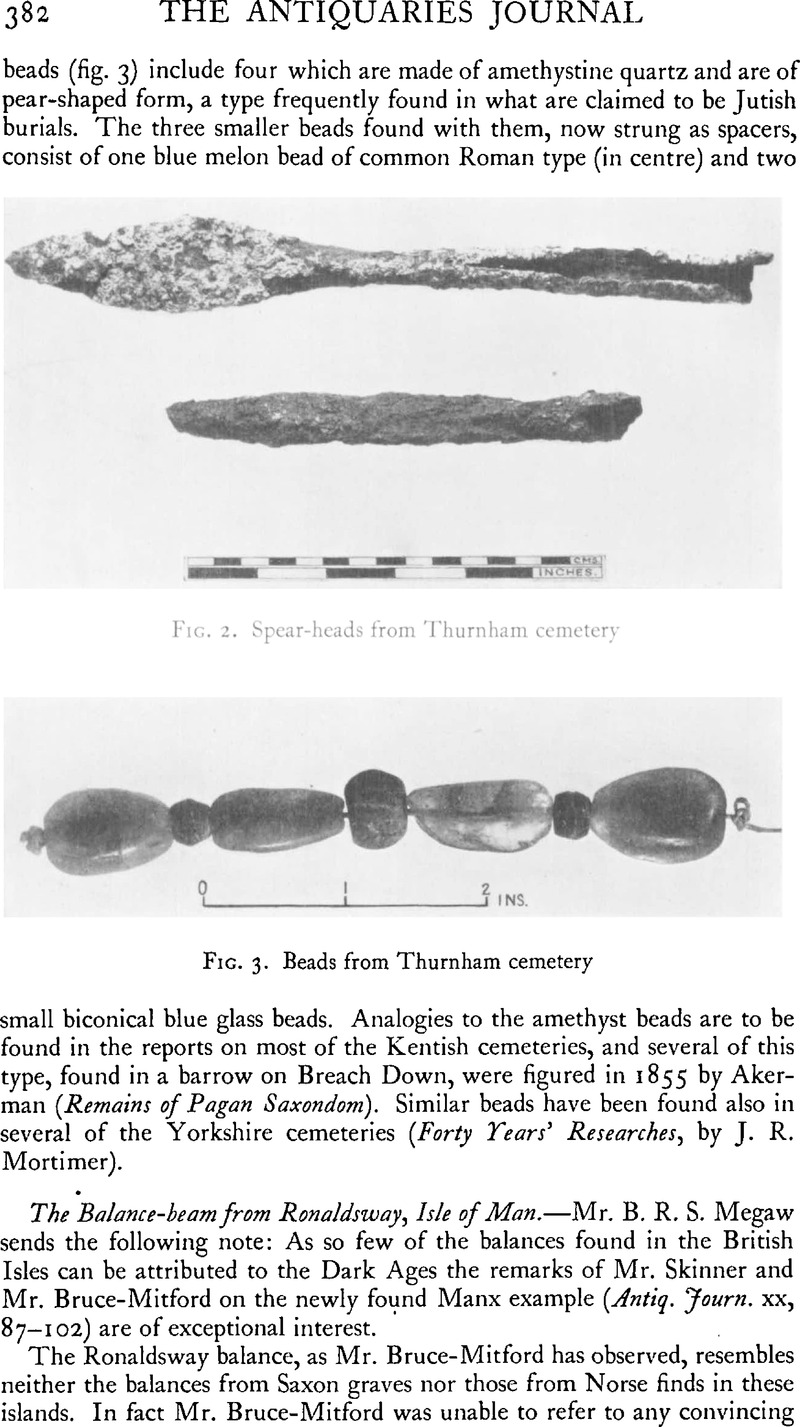No CrossRef data available.
Article contents
The Balance-beam from Ronaldsway, Isle of Man
Published online by Cambridge University Press: 08 January 2012
Abstract

- Type
- Notes
- Information
- Copyright
- Copyright © The Society of Antiquaries of London 1940
References
page 383 note 1 Mr. Bruce-Mitford seems to have placed too much reliance on Mr. Neely's suggestion regarding the age of the grave near which the balance and weight were recovered. The grave was a simple slab-lined tomb of a type which was normal from early Christian times until the end of the middle ages.
page 383 note 2 Proc. Soc. Antiq. Scot, ix, 588; also figured in Anderson, Scotland in Early Christian Times, second series (1881), fig. 17. Owing to air raid precautions at the National Museum of Antiquities of Scotland the balance is not available for study and there is no photograph of it; thus my description is based solely on Anderson's figure. I am much obliged to Mr. A. J. H. Edwards for the trouble he has taken in the matter.
page 384 note 1 Den Norske Bosetningen på Shetland-Orkneyene (1930), figs. 112–13.
page 384 note 2 A similar bird-ornament is attached to one of the balances found in the Viking burial at Ballyholme, co. Down, now in the National Museum of Ireland.
page 384 note 3 Shetelig, Haakon, Vestlandske Graver fra Jernalderen (1912)Google Scholar, fig. 261. The date of the find is discussed by Fett, Per, ‘Arms in Norway between 400 and 600 a.d.’, Bergens Museums Årbok, 1938–9, part ii, p. 25.Google Scholar




